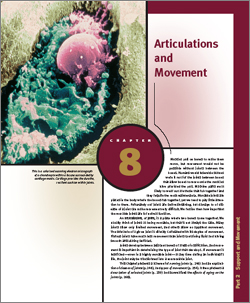
 | Muscles pull on bones to make them move, but movement would not be possible without joints between the bones. Humans would resemble statues were it not for the joints between bones that allow bones to move once the muscles have provided the pull. Machine parts most likely to wear out are those that rub together and they require the most maintenance. Movable joints are places in the body where the bones rub together, yet we tend to pay little attention to them. Fortunately our joints are self-maintaining, but damage to or disease of a joint can make movement very difficult. We realize then how important the movable joints are for normal function. An articulation, or joint, is a place where two bones come together. We usually think of joints as being movable, but that’s not always the case. Many joints allow only limited movement, and others allow no apparent movement. The structure of a given joint is directly correlated with its degree of movement. Fibrous joints have much less movement than joints containing fluid and having smooth articulating surfaces. Joints develop between adjacent bones or areas of ossification, and movement is important in determining the type of joint that develops. If movement is restricted_even in a highly movable joint_at any time during an individual's life, the jointmay be transformed into a nonmovable joint. This chapter presents a scheme for naming joints (p. 248) and an explanation of classes of joints (p. 248), and types of movement (p. 254). It then presents a description of selected joints (p. 259) and summarizes the effects of aging on the joints (p. 268). |